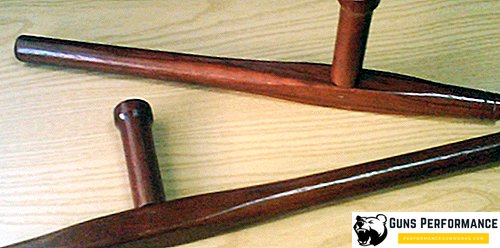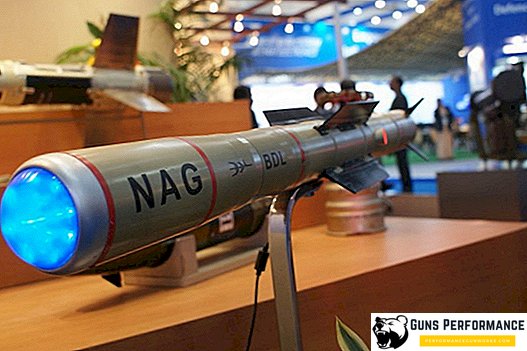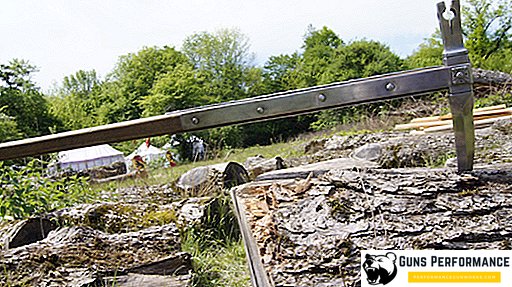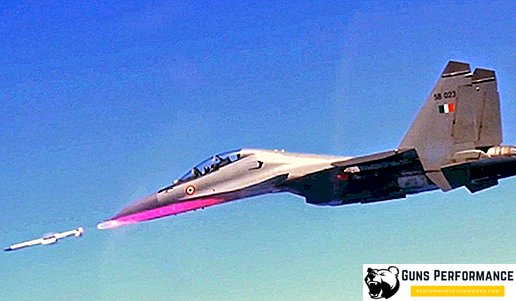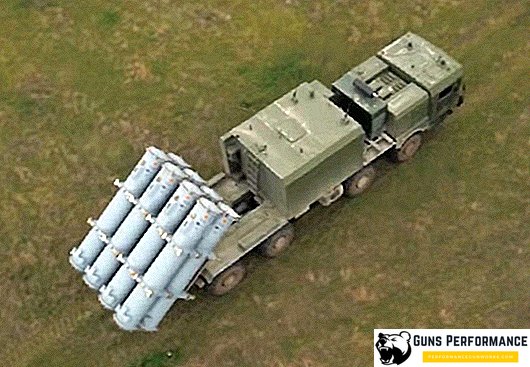
Back in 1954, a new offensive fragmentation grenade RGD-5 was adopted by the Soviet army. Together with the defensive F-1 (it began to be used in 1940), they became a real "sweet couple" for any Soviet, and then the Russian soldier for many decades. These munitions are used in the Russian army today. This is not to say that these grenades are bad, but time does not stand still and today RGD-5 and F-1 are outdated. Most of all claims to the remote fuses of these grenades, which significantly reduce their combat effectiveness.
In the 1970s, the development of a new RGO fragmentation grenade began, which was to replace the famous F-1 pickle. In its design were taken into account the basic wishes of the military.

The RGO (or a defensive hand grenade) is a manual fragmentation grenade, which was adopted by the Soviet army in the early 80s of the last century. Its main difference from its predecessor is the shock-remote fuse, which works not only after a specified period of time (as in the RGD-5 and F-1), but also in a collision with any solid surface.
In parallel with the work on the RGO, the development and more advanced offensive grenades RGN, which was put into service at the same time.
The RGO manual grenade is designed to destroy enemy personnel in a defensive battle. The radius of destruction by shrapnel after the explosion of this ammunition is 50 meters, and the radius of possible destruction is 100 meters. In general, in its tactical and technical characteristics, it is almost identical to the old and proven F-1.
Hand grenades met the twentieth century as an old, forgotten and practically unused weapon. These munitions had an archaic design, were equipped with black smoke powder. In fact, exactly the same grenades threw themselves into the enemy even the grenadiers of the XVII century.
In 1896, the Russian Artillery Committee generally ordered the removal of hand grenades from circulation due to their unreliability and low efficiency. And then the Russo-Japanese war happened - the first armed conflict of the new history, in which mass armies, armed with modern artillery, machine guns and magazine rifles, met on the battlefield. And it turned out that hand grenades are very early to write off.
To hide from small arms and artillery fire, opponents began to actively dig in the ground. Field fortifications made firearms almost useless, and then they remembered old and well-forgotten hand grenades. Since the industrial designs of these munitions were absent, the soldiers of both sides began to improvise. Hand grenades were made from artillery shells, bamboo poles, and pipe scraps. The need for this type of ammunition was so great that in the besieged Port Arthur they managed to organize a mass production of grenades, during the siege they made 68 thousand pieces.
The experience of the war in the Far East was taken into account by the strategists of the leading military powers of the time. Therefore, in the First World War, all its main participants entered, having armed with hand grenades of more or less successful designs. Speaking of ammunition from that period, two hand grenades should be noted separately: the British Mills Bomb No. 5 and the French F-1. In Russia, just before the war, the Rdultovsky grenade was put into service, but it had a very complex structure and was not particularly reliable.

Positional trench warfare rapidly turned hand grenades into one of the main types of infantry weapons. By August 1915, the monthly need of the Russian army for these munitions was 3.5 million units. And the domestic industry was able to produce no more than 600 thousand grenades per month. Therefore, they began to actively buy from the allies. During the war years, hundreds of thousands of British and French grenades were delivered to Russia.
In the 1920s, millions of seventeen types of hand grenades were in the warehouses of the Red Army, and their own production in the country was completely absent. For the French Grenade F-1, a new, more reliable fuse was developed for the Koveshnikov system. Thus, the modernized "lemon" called F-1 in 1928 was adopted by the Red Army.
In 1939, the Engineer of the Temples copied French ammunition, slightly improving it. A new grenade was named F-1, almost immediately in the USSR its large-scale production was deployed. In 1941, instead of the Koveshnikov fuse, a "unified fuse to hand grenades" of a remote type - UZRG was developed. After the war, new, more advanced fuses of UZRGM and UZRGM-2 appeared, which are still used in hand grenades RGD-5 and F-1. Since then, no changes have been made to the F-1 design; one can say that the long evolution of the “Pomegranate” is over.
F-1 with remote UZRG - this is a great weapon, simple, reliable and effective. However, this grenade also has certain disadvantages, mainly due to the peculiarities of the remote igniter. It explodes after a certain time, knowing that you can quite simply hide from the fragments, and even throw the grenade back. Already during the First World War, soldiers familiarized themselves with the main characteristics of the enemy grenades so that they could defend against them more effectively. In addition, during the fall of the grenade can bounce to the side or roll away from the desired location. Also, the military was not satisfied with the uneven fragmentation of the F-1 case into shards and the unpredictability of their expansion.
Work on the creation of a new defensive grenade began in the late 70s, they were carried out by the specialists of GNPP "Basalt". The development of new weapons was strongly hampered by the huge reserves of F-1, which were in the warehouses of the Ministry of Defense since the war.
The war in Afghanistan had a significant impact on the course of work on the RGO, which showed the ineffectiveness of the remote fuse. In the conditions of the mountainous terrain, the F-1 (like the RGD-5) often posed a greater danger to those who threw themselves than to his opponents.

The RGO has a complex fuse that triggers when a grenade comes into contact with any solid surface. And it makes absolutely no difference at what angle the ammunition will meet with the obstacle.
Externally, the RGO grenade is significantly different from F-1. Her body has a rounded shape, there is no familiar protruding tube sunk. The grenade also has notches, but they are much smaller than the F-1.
The body of the RGO grenade consists of four hemispheres (two internal and two external), which are made of steel with a thickness of 2.8 mm. Each of them has notches. In the upper part of the grenade there is a glass with thread into which the fuse is screwed. During storage, it is closed with a special stopper. Before using the grenade, the cork is removed and the fuse is screwed in its place.
Grenade RGO (as well as RGN) has a shock-ignition fuse (UDS) 7ZHZ, which was also developed in the "Basalt". UDZ differs from the standard fuses of grenades F-1 and RGD-5 in that it has two operation circuits that duplicate the action of each other.
In general, the RGO’s grenade fuse consists of several nodes:
- Safety initiator, which includes a drummer with a mainspring, a safety lever and a check with a ring;
- Pyrotechnic, consisting of a primer-igniter, self-liquidator and two long-range cocking retarders;
- Mechanical with inertial load, located on a special spring-loaded cup with a needle, cap and fuse;
- Detonator.
How does the triggering of the RGO grenade occur?
After the fighter pulls out the check and throws the grenade in the direction of the target, the safety lever releases the firing pin. The latter turns around the axis and punctures the primer-igniter, which ignites three tubes with pyrotechnic compositions inside at once: two moderators and one self-killer.

After the burning of the fuel composition in the retarder tubes, special pins under the action of the springs go inside. Then the safety slider is shifted to the side, and the bowl with the inertial load and primer-primer goes down. It occupies a position that the capsule is directly supplied to the detonator - the grenade is on combat platoon and ready to undermine. This happens in 1.3-1.8 seconds after throwing a grenade (releasing the safety lever).
An inertial load is a plastic ball with metal balls placed inside it. It is this node of the fuse that is responsible for the shock explosion of the grenade. In a non-combustible position, the ball is clamped between the bowl and the body of the munition, after burning the retarders, it gets the space to shift downwards. With any impact of a flying grenade, the ball hits the cup, the needle of which hits the primer and ignites the detonator.
If the grenade falls into soft sand, snow or water, and the shock fuse does not work, then the detonation is carried out by the self-killer (the third tube). The burning time of the ignition rocket of the RGO is 3.2-4.2 seconds (depending on the air temperature).
The case of the UDZ fuse is plastic, but all the main elements of the fuse are metal.
With the explosion of the RGO grenade 650-700 fragments are obtained, weighing about 0.5 g and a flight speed of 1-1.2 thousand m / s. The area of their spread is 200-280 m2. It can be added that the "fragmentation" of the RGO is more predictable than that of the Mils or F-1 grenade. This means that the explosion produces a few large fragments with high energy, which are significantly beyond the standard field of destruction. This property of the RGO is its undoubted advantage, because it provides greater safety of these ammunition for its own troops.




